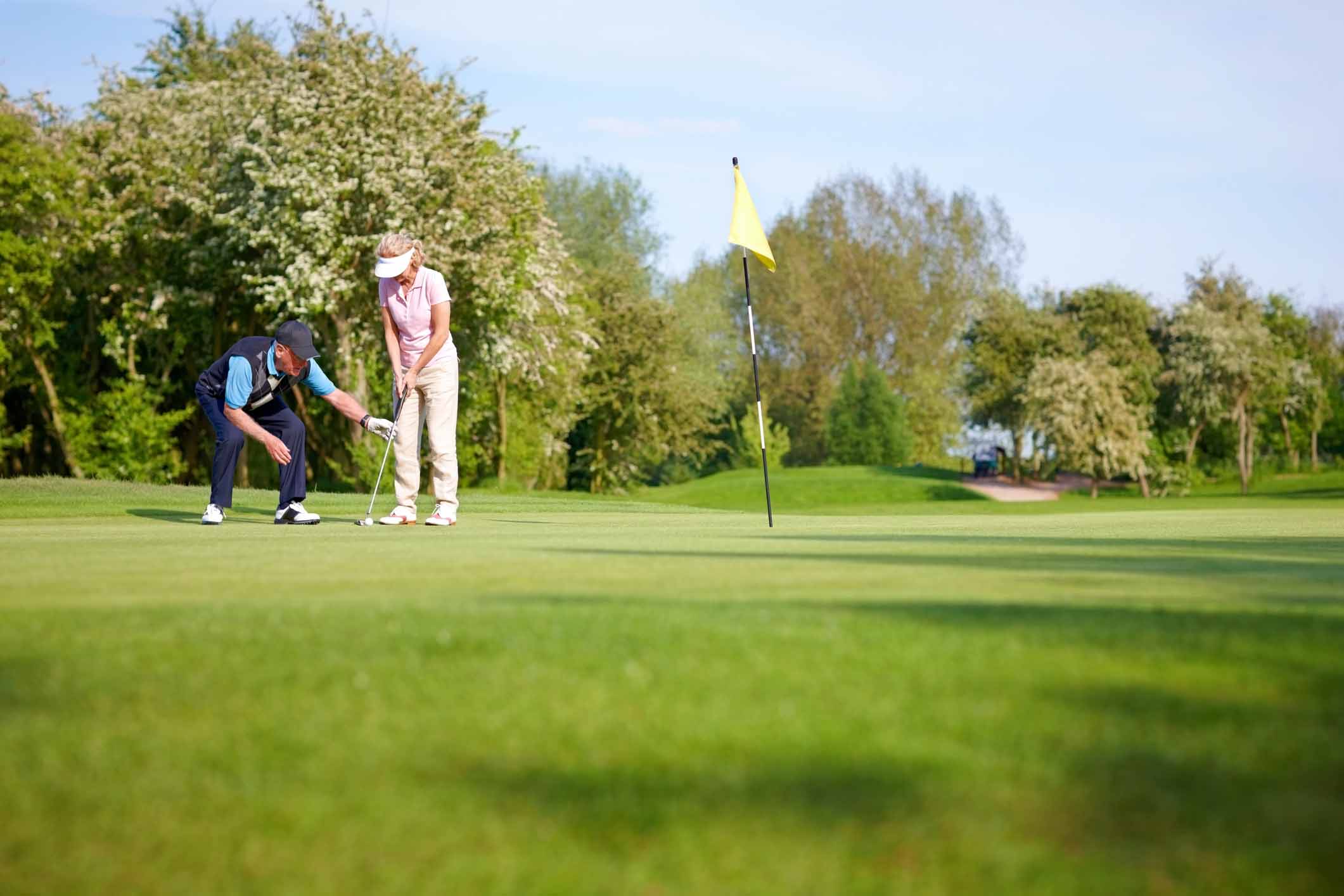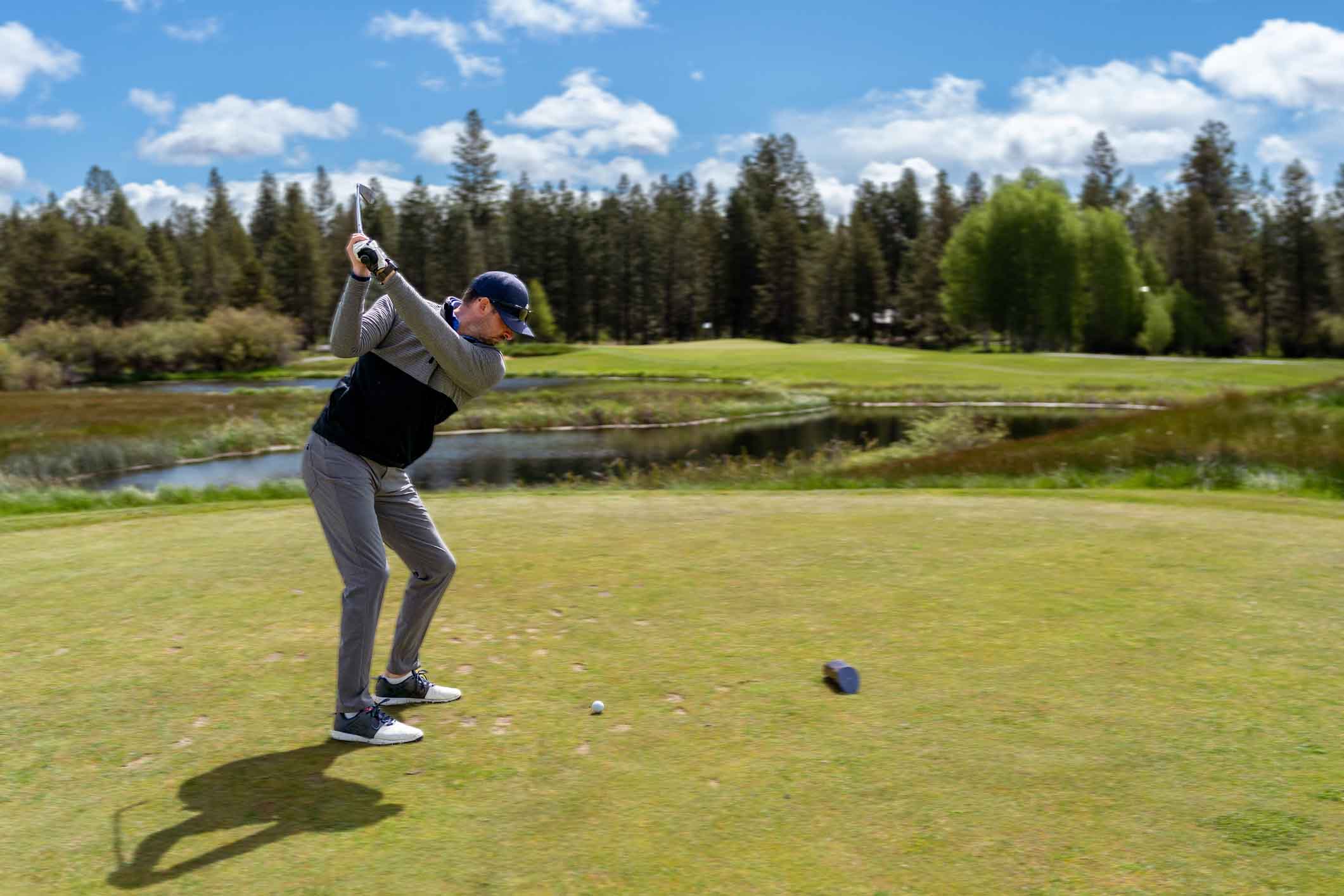In a typical round of golf, up to 40% of your shots are made with a putter. That means nearly half your game happens on the green—so getting your putting right is absolutely crucial.
There are plenty of different ways to line up a putt, and most come down to personal preference. But one method that’s gained serious traction in recent years is Aimpoint putting—a technique used by major champions like Dustin Johnson and Adam Scott to conquer Augusta and win the Masters.
Aimpoint stands out from more traditional methods because it relies less on your eyes and more on your feet and fingers. But how exactly does it work—and why is it so effective?
This guide will walk you through everything you need to know: what Aimpoint putting is, how to use it, and how it can transform your performance on the greens.
What is aimpoint putting and where does it come from?
The Aimpoint method was developed by Florida-based golf coach Mark Sweeney, who was struggling with reading putts in his own game. By using software to better understand how a ball moves across sloped greens, he created a predictive model that evolved into a teaching method.
His system first gained attention on the Golf Channel as a tool to help viewers read greens during live coverage. Since then, it’s been streamlined into what’s now known as the Aimpoint Express—the faster, more practical version most golfers use today.

Is the aimpoint putting technique legal?
Yes, 100%. Whether you’re teeing it up in a weekend tournament or playing a casual round with friends, you’re free to use the Aimpoint method on every hole if you choose.
How does the aimpoint putting system work?
It’s worth noting that Aimpoint isn’t something you’ll master straight away—it has a learning curve. That’s why it’s often recommended to get guidance from a qualified instructor. But here’s a simplified breakdown of the three core steps:
Step 1: feel the slope
Instead of relying on your eyes, you’ll now use your feet to read the green. Stand shoulder-width apart, about one pace behind the ball (or two for longer putts).
Shift your weight slightly and notice which foot feels heavier—this tells you which way the slope is running. Then, rate the severity of the slope on a scale of 1 to 5 (with 5 being the steepest). An instructor can really help you learn to judge this accurately.
Step 2: aim the putt with your fingers
From the same spot, hold your arm out toward the hole and close one eye. Use the inside edge of your index finger to line up with the hole. The rest of your fingers—held on the higher side of the slope—represent how far you should aim away from the hole.
The number of fingers depends on the slope you felt in Step 1: one finger for a mild slope, five for a steep one. The outside edge of those fingers becomes your aimpoint—where you want to start the ball.
Step 3: roll your putt towards the hole
Once you’ve found your aimpoint, commit to it and roll the ball in that direction. If done correctly, the ball should break along the slope and curve back toward the hole.
Learn more about aimpoint putting in this video.
How can the aimpoint putting technique be beneficial?
You may think that aimpoint putting will just help you score a little better on the greens. But if you can maximise the potential of it, and get your technique right, the ramifications for your overall game could be huge:
1. Improved Speed Control
Aimpoint doesn’t just help with direction—it also helps you understand how slope and friction affect ball speed. Over time, you’ll develop a better sense of how hard to hit your putts, which is a game-changer for those who tend to leave putts short or blast them past the hole.
2. A Reliable, Repeatable Process
This method is trusted by golfers at all levels—from weekend warriors to elite professionals. In fact, Aimpoint has been used by multiple World Number Ones, over 200 Tour pros, and tens of thousands of amateur players.
If you’ve ever spent hours perfecting your swing but neglected your putting routine, Aimpoint can give you a structured, consistent approach to every putt, on every green.
3. Greater Confidence and Smarter Decisions
The clarity Aimpoint provides can also improve your mindset. When you trust your read, you’re less likely to second-guess yourself—and that confidence can have a ripple effect throughout the rest of your round.

How can you adopt the aimpoint putting system?
Like any new skill in golf, Aimpoint takes practice and patience. It might feel unusual at first, especially if you’ve always relied on visual reads. Try using a tee during practice to test different breaks and build your feel for gradients.
To accelerate your progress, consider working with a certified Aimpoint instructor. Even a single session can help you better understand slope ratings and finger alignment, which can save you strokes on the course.
That said, if putting is already one of your strong suits, you might not need to make such a dramatic change. Aimpoint is best suited for those who struggle with green reading or feel stuck in a putting rut.
Whether you’re aiming to shave a few shots off your score or just want to feel more in control on the greens, Aimpoint putting could be the upgrade your game needs.
Get golf insurance with SportsCover Direct
While putting is probably the lowest-risk part of playing golf, there are still a number of dangers to watch out for across your game as a whole. If you get hurt while out on the course, accidentally injure someone with a tee shot or drive off the fairway, or suffer loss, theft or damage to your clubs, things can quickly get expensive.
That’s why taking out comprehensive golf insurance is so important. At SportsCover Direct, with one of our affordable policies in place, you can give yourself the confidence and peace of mind to concentrate on your game and make improvements. And if you get a hole-in-one, we’ll even pick up the tab for up to £250 of drinks at the bar. Take a moment today to explore our golf insurance policies in more detail.